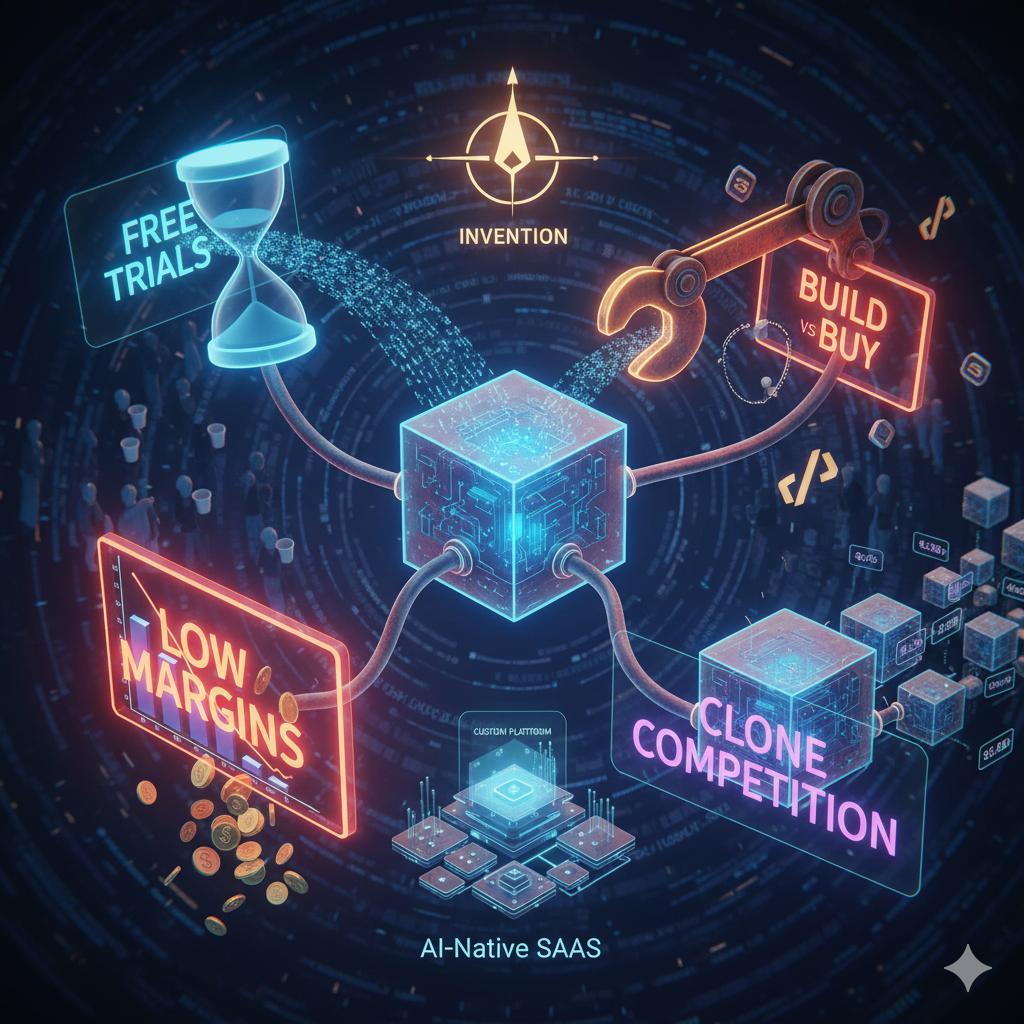
Challenges of AI-Native SaaS
Building AI-native Software-as-a-Service (SaaS) products is easier than ever now, but it comes with significant new challenges. With 20 years of experience leading engineering teams at startups, including two in AI, I’ve identified four critical challenges for AI-native SaaS startups.
Challenge 1: Lower Margins
Today’s most useful AI products have high compute costs, which drive down margins. These products use bigger reasoning models that “think out loud” before giving results. This takes more compute cycles. New AI products will feature agentic workflows. They will run LLMs multiple times for each task, leading to further increased computation needs. This means there’s a trade-off between quality and cost. To maintain a high quality bar, costs will be higher, resulting in profit margins of 30-40%, rather than 80-90% as with traditional SaaS.
Challenge 2: The Need for Free Trials
To really understand the difference between a good AI product and a great one, you need a free trial. New AI models excel in dealing with novel situations, making it hard to assess their value without trying them out. AI-native SaaS products need a generous free tier so potential customers can see their worth. These free trials need costly computing. This raises the cost of acquiring each paying customer and lowers the profit per customer. As a result, AI-native SaaS companies face tough economics.
Challenge 3: Losing the Build vs Buy Argument
AI coding tools have made it easier to write software. This means that future business customers of B2B SaaS companies might prefer to create their own software rather than pay for a license. When software gets cheaper to build, it makes less sense to rent someone else’s software, leading to fewer SaaS sales.
Challenge 4: Clone Competition
The ease of writing software has also made it easier to copy someone else’s software. A competitor can quickly create a similar product by using AI coding tools, adding educated guesses as to AI prompts and models. The clone might have rough edges, but the competitor can fix them while stealing users with lower prices. This is happening frequently in the AI-native SaaS space.
Necessity is the Mother of Invention
To meet these challenges, new approaches to AI and SaaS are necessary. Building more of the same SaaS products, only now with AI, won’t work.
To address the problem of increased AI compute costs, incorporate cost control into the AI product’s build. If possible, move compute costs to the end user using small models that can run on commodity GPUs or NPUs. Also, look for places in agentic flows where you can perform parts of the work without reading or writing data with an LLM.
To address the problem of software becoming a commodity, make the software more custom. Invest in a modular software architecture that you can customize with AI. This allows users to create the interface they need for their specific use cases. Users can also change the UX as their needs change. This will make software development more challenging. But it will create a platform that is harder to copy. It will also be more polished than self-built options. Plus, it promises users future improvements typical of SaaS.
These and other new strategies will be clearer as the market identifies the winners among AI-native startups. These are exciting times ahead, and I’m glad to be a part of them.